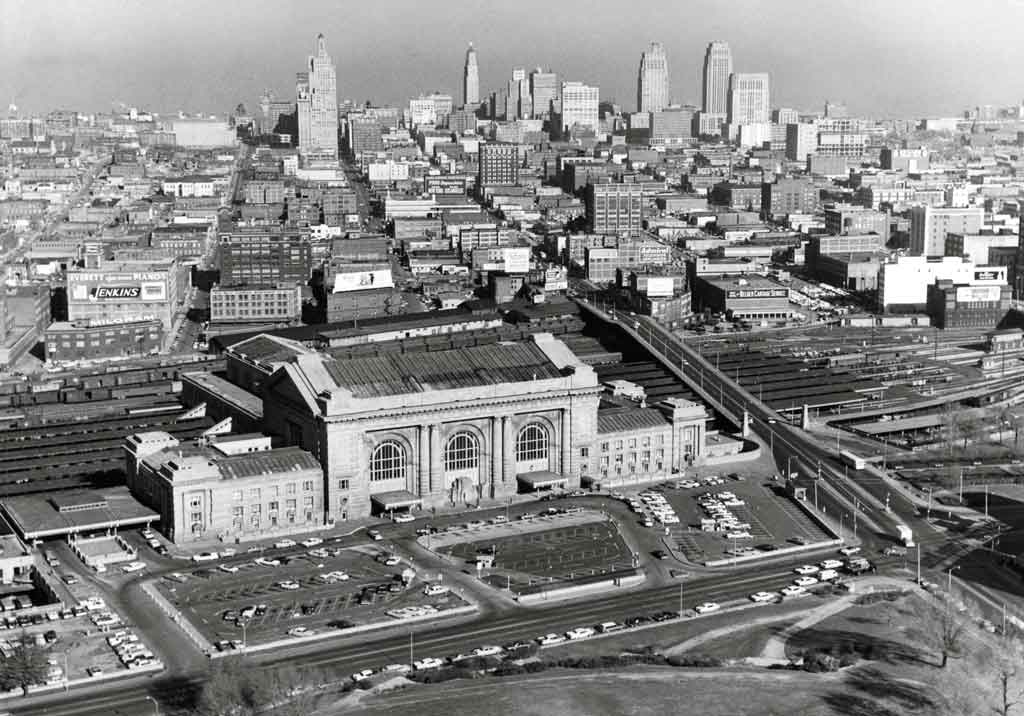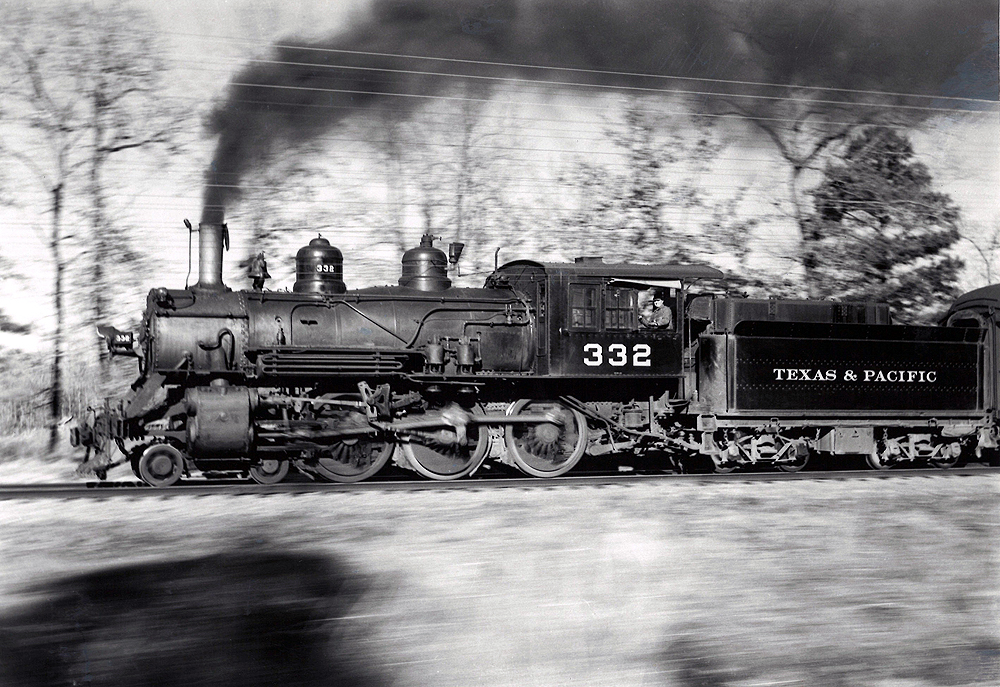
4-6-0 Ten-Wheeler steam locomotive No. 332
Texas & Pacific rostered more than 125 Ten-Wheelers, built between 1900 and 1912. Engine 332 steps lively with train 27, the Shreveport–Marshall connection for the westbound Texas Special, in 1942.
Ed Robinson
Texas & Pacific rostered more than 125 Ten-Wheelers, built between 1900 and 1912. Engine 332 steps lively with train 27, the Shreveport–Marshall connection for the westbound Texas Special, in 1942.
Ed Robinson

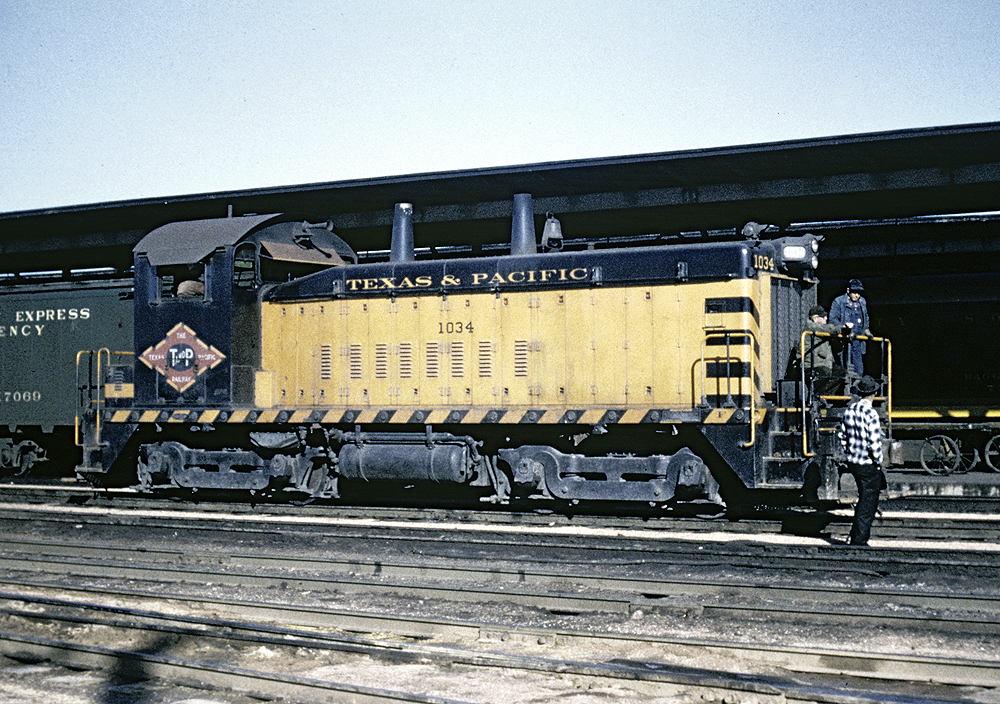
EMD SW9 diesel locomotive No. 1034
Texas & Pacific No. 1034, one of the road’s 13 SW9 switchers built in 1951, wears the “Swamp Holly” orange and black T&P adopted for hood units. Note the visor over the center cab windows to ward off the Texas sun.
J. David Ingles collection
Texas & Pacific No. 1034, one of the road’s 13 SW9 switchers built in 1951, wears the “Swamp Holly” orange and black T&P adopted for hood units. Note the visor over the center cab windows to ward off the Texas sun.
J. David Ingles collection

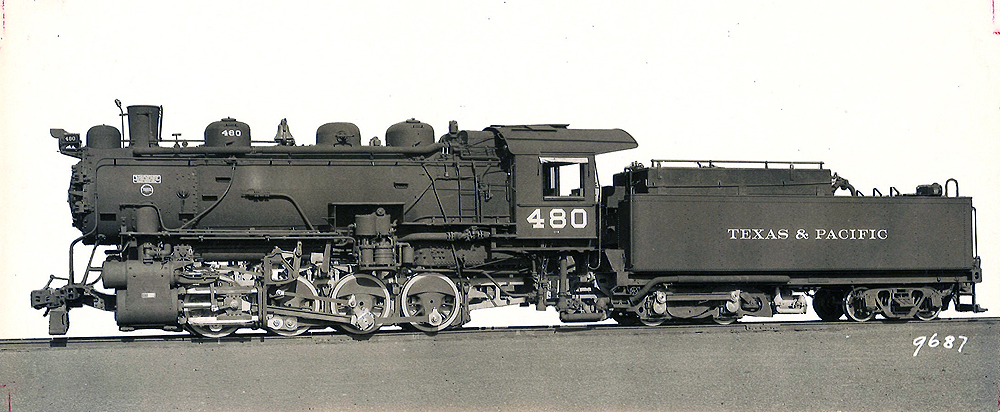
0-8-0 steam locomotive No. 480
The C-2a class was the ultimate development of Texas & Pacific’s steam switcher fleet, with tender booster, front-end throttle, and an outside pipe carrying superheated steam for the auxiliaries. Baldwin constructed engines 480 and 481 in 1926, followed by sisters 490–491 in 1927.
Baldwin
The C-2a class was the ultimate development of Texas & Pacific’s steam switcher fleet, with tender booster, front-end throttle, and an outside pipe carrying superheated steam for the auxiliaries. Baldwin constructed engines 480 and 481 in 1926, followed by sisters 490–491 in 1927.
Baldwin

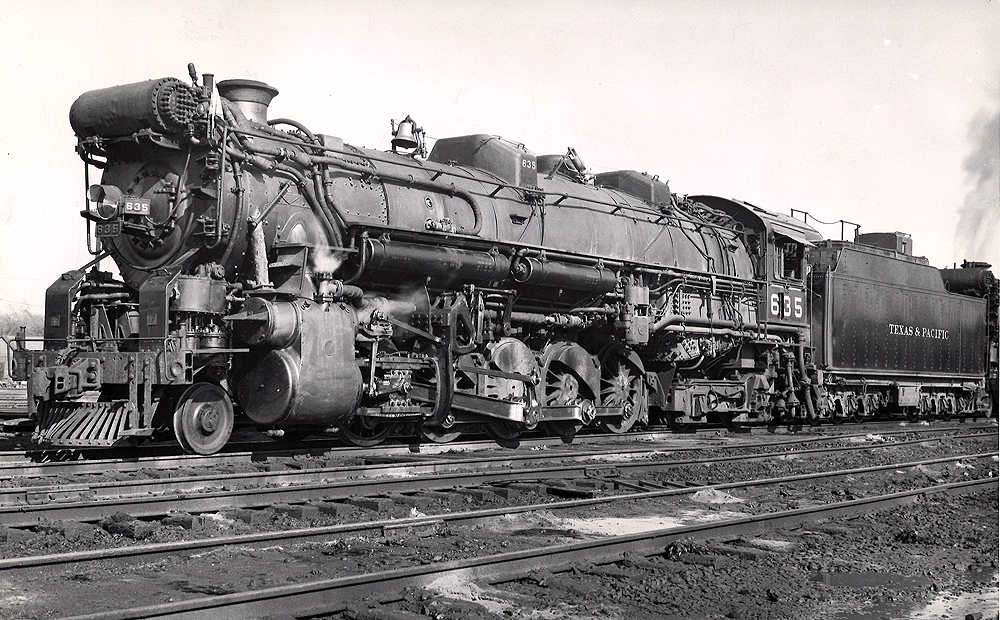
2-10-4 Texas-type steam locomotive No. 635
Texas & Pacific was the first buyer of the 2-10-4 wheel arrangement, hence the type’s “Texas” name. Lima produced 70 of the fast freight haulers, in classes I-1 through I-1d, during 1925–29. One survives, No. 610, on display at the Texas State Railroad.
G.M. Best
Texas & Pacific was the first buyer of the 2-10-4 wheel arrangement, hence the type’s “Texas” name. Lima produced 70 of the fast freight haulers, in classes I-1 through I-1d, during 1925–29. One survives, No. 610, on display at the Texas State Railroad.
G.M. Best

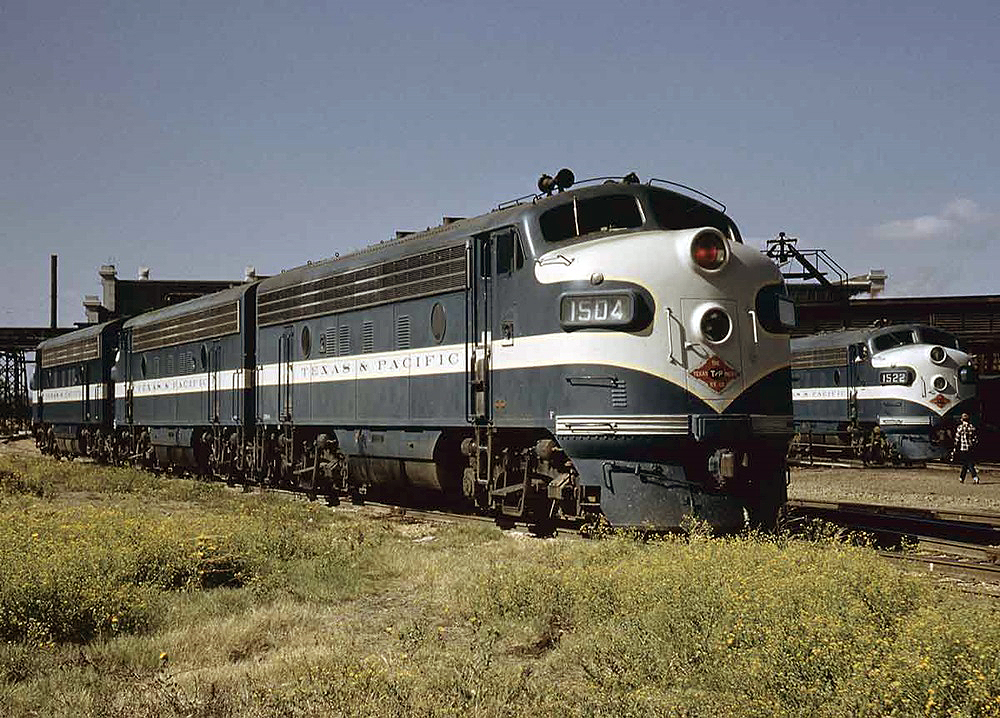
EMD F7 diesel locomotives
Engine 1504 and other F7s congregate at Fort Worth in the early 1950s. Texas & Pacific owned 83 F7As and 35 F7Bs, built 1949–52. They were primarily freight units, but 2 A units and 4 Bs had steam.
Linn H. Westcott
Engine 1504 and other F7s congregate at Fort Worth in the early 1950s. Texas & Pacific owned 83 F7As and 35 F7Bs, built 1949–52. They were primarily freight units, but 2 A units and 4 Bs had steam.
Linn H. Westcott

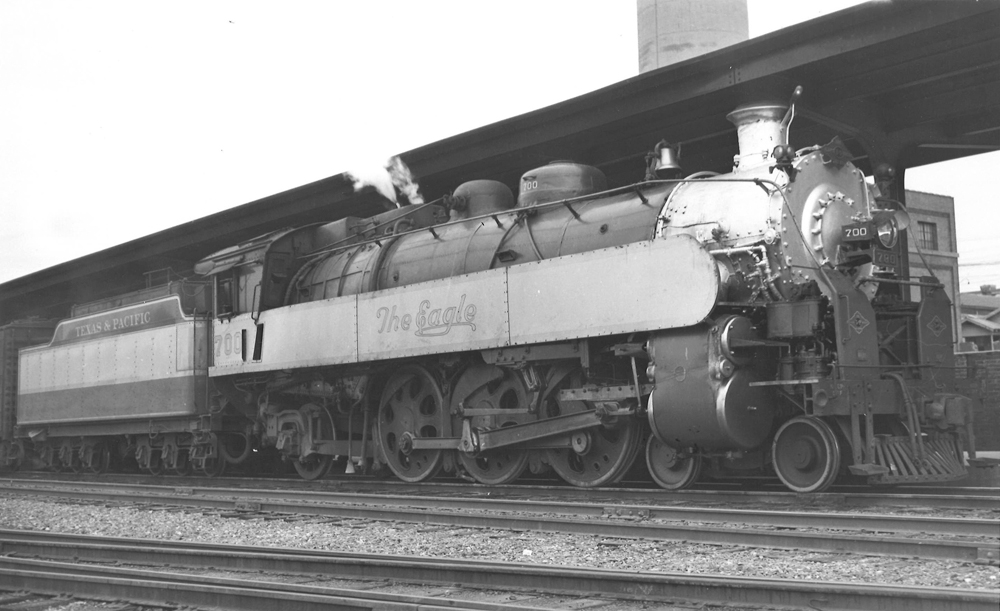
4-6-2 Pacific-type steam locomotive No. 700
Decked out in blue and gray, and fitted with deep running-board skirts, P-1 Pacific No. 700 (Baldwin, 1919) stands at Shreveport with the Louisiana Eagle in January 1950. Texas & Pacific’s 22 4-6-2s were built to the same basic 73-inch-drivered design during 1919–23.
Harold K. Vollrath
Decked out in blue and gray, and fitted with deep running-board skirts, P-1 Pacific No. 700 (Baldwin, 1919) stands at Shreveport with the Louisiana Eagle in January 1950. Texas & Pacific’s 22 4-6-2s were built to the same basic 73-inch-drivered design during 1919–23.
Harold K. Vollrath

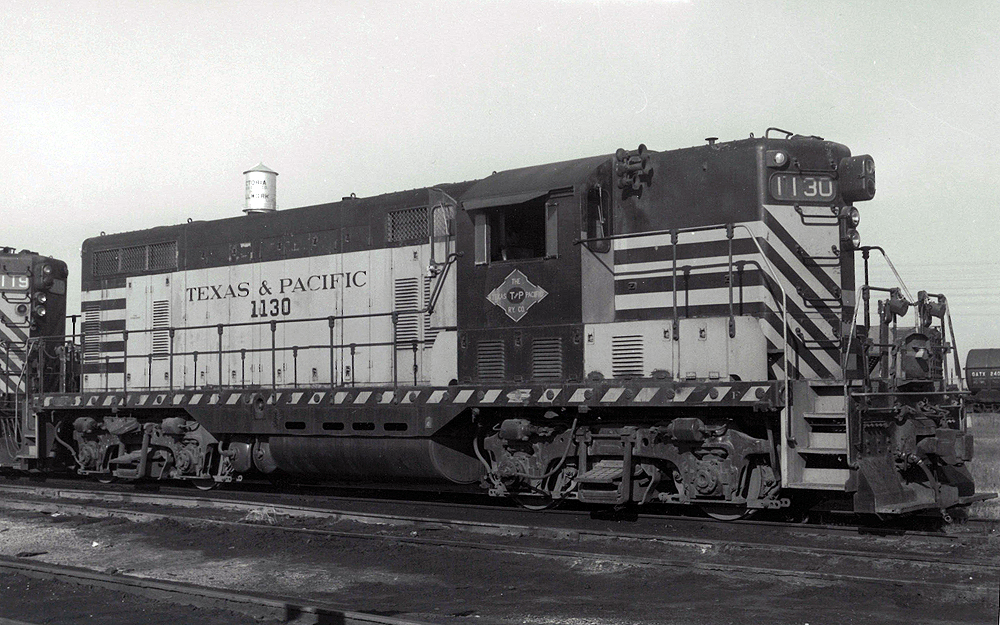
EMD GP9 diesel locomotive No. 1130
Sunning itself at Shreveport in late 1960 is the last-built of Texas & Pacific’s 21 GP7 freight units, delivered 1950–52. T&P got 14 GP9s in 1957 and 5 GP18s in ’60. A further 11 GP7s came to the road from the Kansas, Oklahoma & Gulf and Midland Valley after T&P gained control of the “Muskogee Group” lines in 1964.
Harold K. Vollrath
Sunning itself at Shreveport in late 1960 is the last-built of Texas & Pacific’s 21 GP7 freight units, delivered 1950–52. T&P got 14 GP9s in 1957 and 5 GP18s in ’60. A further 11 GP7s came to the road from the Kansas, Oklahoma & Gulf and Midland Valley after T&P gained control of the “Muskogee Group” lines in 1964.
Harold K. Vollrath

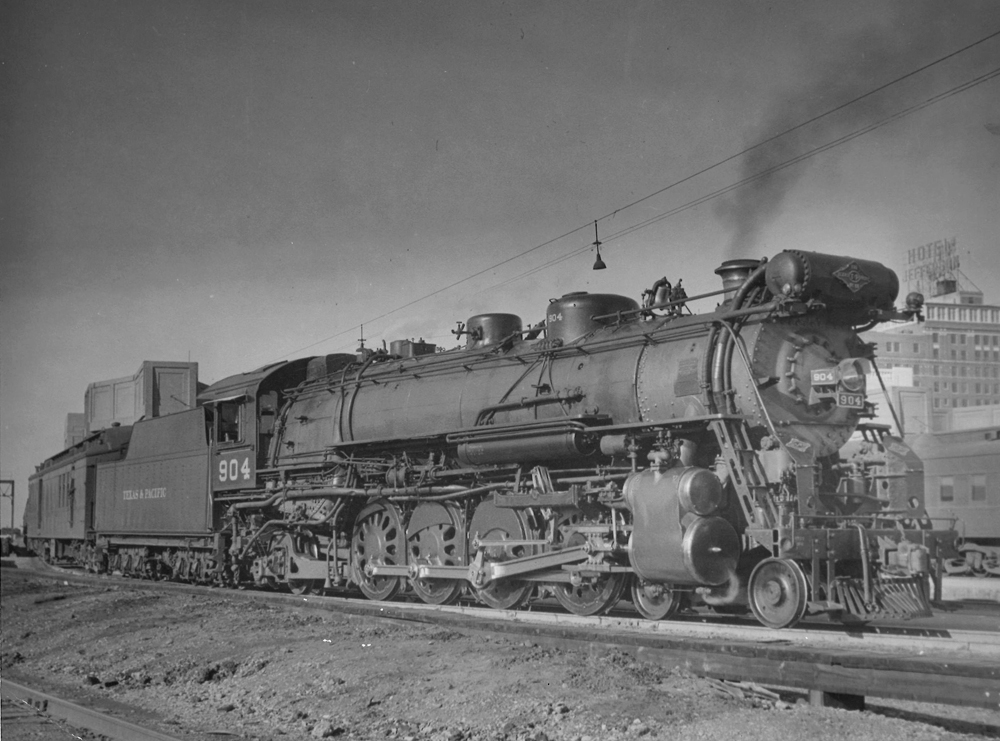
4-8-2 Mountain-type steam locomotive No. 904
Handsomely turned-out engine No. 904, one of Texas & Pacific’s 10 4-8-2 passenger locomotives (Alco and Baldwin, 1925 and ’28), heads the Sunshine Special at Dallas in the 1940s. Note the T&P diamond emblem on the Elesco feedwater heater and air-pump shields.
Railroad Photographic Club
Handsomely turned-out engine No. 904, one of Texas & Pacific’s 10 4-8-2 passenger locomotives (Alco and Baldwin, 1925 and ’28), heads the Sunshine Special at Dallas in the 1940s. Note the T&P diamond emblem on the Elesco feedwater heater and air-pump shields.
Railroad Photographic Club

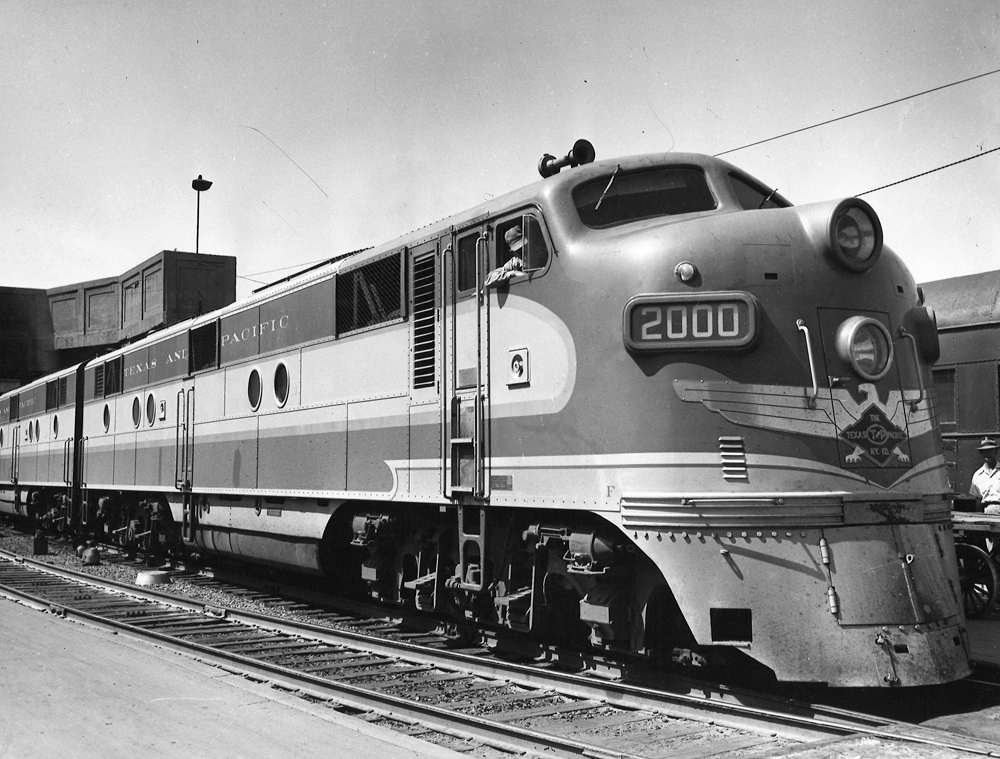
EMD E7 diesel locomotive No. 2000
The first of Texas & Pacific’s 10 E7 passenger units, built in 1947 and ’49, stands at Dallas Union Terminal. Missouri Pacific’s control of T&P is reflected in the blue and gray colors, eagle emblem on the nose, and porthole (instead of rectangular) windows on the side.
Texas & Pacific
The first of Texas & Pacific’s 10 E7 passenger units, built in 1947 and ’49, stands at Dallas Union Terminal. Missouri Pacific’s control of T&P is reflected in the blue and gray colors, eagle emblem on the nose, and porthole (instead of rectangular) windows on the side.
Texas & Pacific

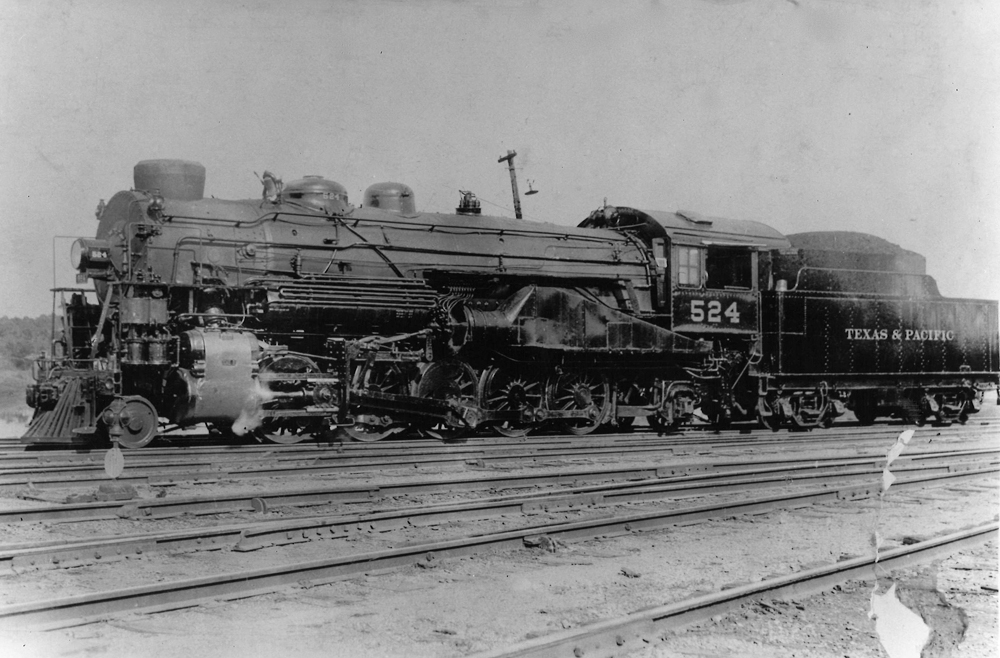
2-10-2 Santa Fe-type steam locomotive No. 524
Forty-four light 2-10-2s of 1916–19 were Texas & Pacific’s top freight power until the 2-10-4s began arriving in 1925. A spike in oil prices prompted T&P to convert 2-10-2 No. 524 to burn lignite, a low-grade brown coal available locally, in 1923. The conversion involved installing a special smokestack and sealing the firebox and adding a turbine-driven fan to furnish combustion air. The experiment was not successful, and the “Snuff Dipper,” as the oddity was dubbed, was converted back to oil in 1927.
Everett L. DeGolyer Jr. collection
Forty-four light 2-10-2s of 1916–19 were Texas & Pacific’s top freight power until the 2-10-4s began arriving in 1925. A spike in oil prices prompted T&P to convert 2-10-2 No. 524 to burn lignite, a low-grade brown coal available locally, in 1923. The conversion involved installing a special smokestack and sealing the firebox and adding a turbine-driven fan to furnish combustion air. The experiment was not successful, and the “Snuff Dipper,” as the oddity was dubbed, was converted back to oil in 1927.
Everett L. DeGolyer Jr. collection

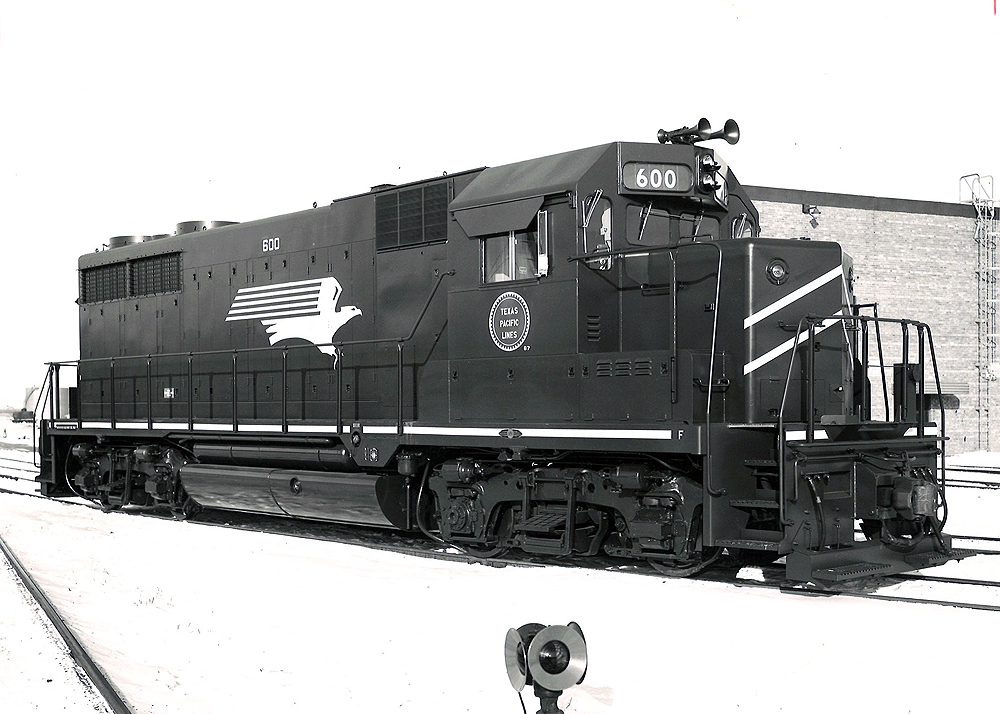
EMD GP35 diesel locomotive No. 600
A loyal EMD customer in the first-generation era, Texas & Pacific stuck with La Grange products in the early second-generation era. GP35 No. 600 was the first of a group of 15 delivered in 1964. Only TEXAS PACIFIC LINES within a Missouri Pacific “buzz-saw” emblem distinguishes the unit from MoPac’s own Jenks blue-clad diesels.
EMD
A loyal EMD customer in the first-generation era, Texas & Pacific stuck with La Grange products in the early second-generation era. GP35 No. 600 was the first of a group of 15 delivered in 1964. Only TEXAS PACIFIC LINES within a Missouri Pacific “buzz-saw” emblem distinguishes the unit from MoPac’s own Jenks blue-clad diesels.
EMD

Please enjoy a collection of locomotive images located in the David P. Morgan Library archives at Kalmbach Media that include the T&P’s iconic locomotives and classic scenic photos.
You might also enjoy this TP history article from Classic Trains, a photo gallery of Texas & Pacific passenger trains, or freight trains.






